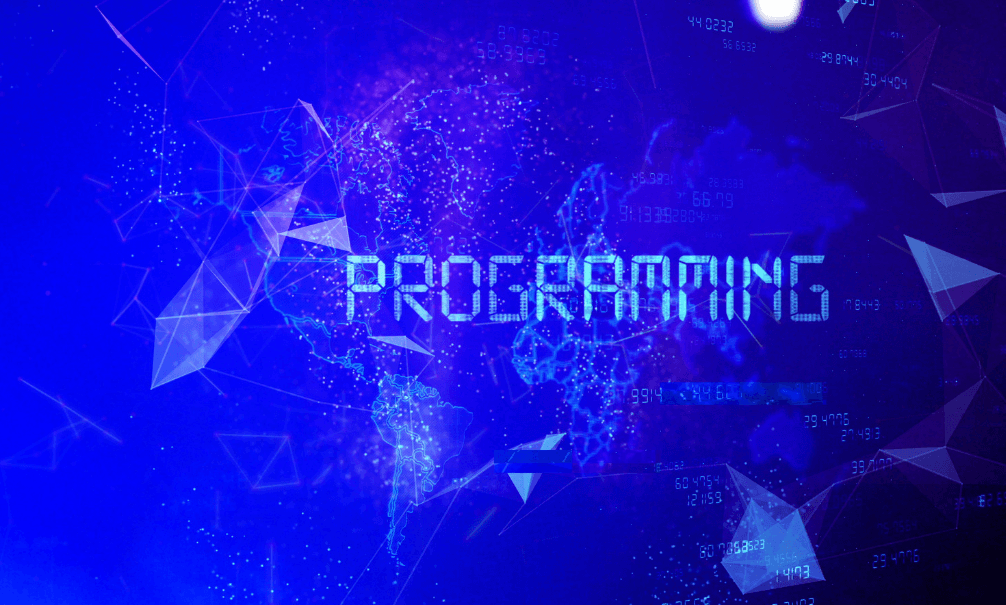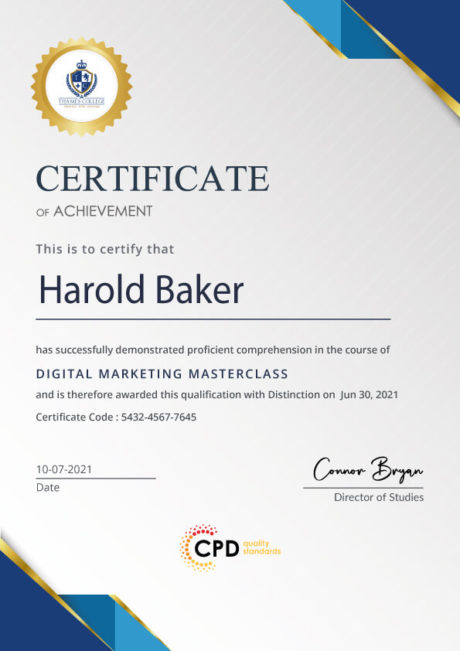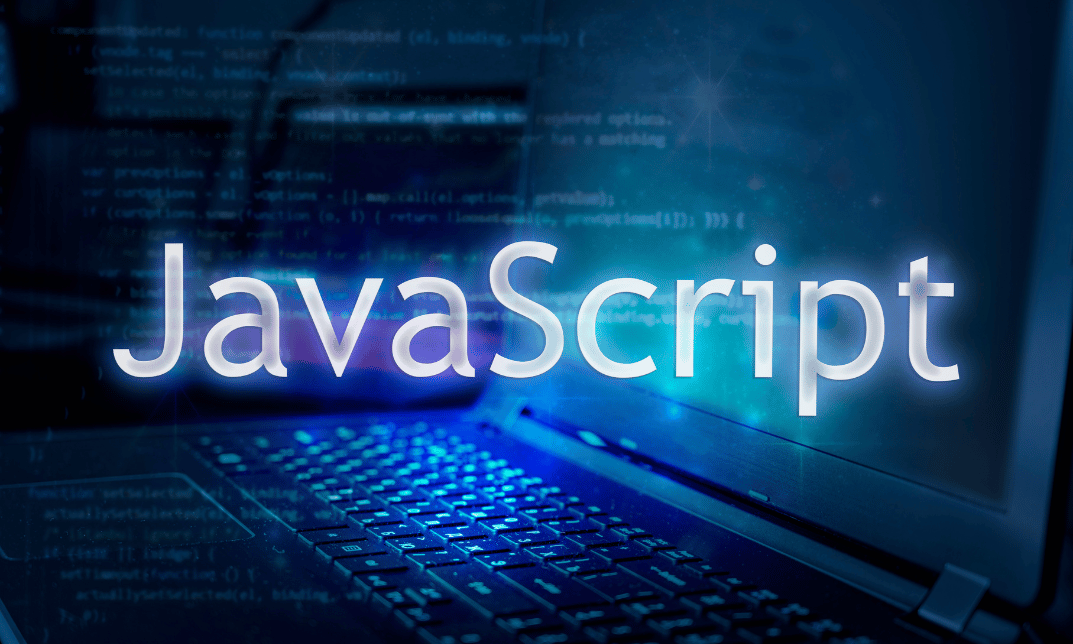Course Overview
You’ll have an arsenal of skills to lock down your desired career after completing this R Programming for Data Science course. Moreover, you will have access to all of the materials in this course for free for a whole year and learn a multitude of highly coveted skills to move up the corporate ladder.
With this comprehensive R Programming for Data Science course, you’ll have all of your questions answered and all of the necessary expertise under your belt. Apart from setting you up for success, this course offers numerous advantages to make your learning experience more pleasurable and less stressful. So, add this R Programming for Data Science course to the basket and take your expertise up a notch!
Please Note: Thames College is a One Education approved resale partner for Quality Licence Scheme Endorsed courses.
Why Choose Thames College?
Thames College offers you the benefit of —
- Learn with engaging voice-over and visual elements to facilitate your learning process.
- Receive round-the-clock access to expert assistance.
- Participate in quick assessments and get instant feedback on your progress.
- Study at your own schedule from the convenience of your own home.
Who Is This Course For?
Those who want to strengthen their professional skills while training for the desired job should take advantage of the R Programming for Data Science training! This course will keep you up-to-date with all the latest developments and coach you accordingly. So invest in this R Programming for Data Science course if you want the best training available.
Certificate of Achievement
CPD Certification
After successfully completing the assessment of this R Programming for Data Science course, you can apply for the CPD accredited certificates. The PDF version is only £2.99 and the Hardcopy version will cost you £8.99.
Requirements
No formal entry requirements! No prerequisites or relevant experience is required!
This course is accessible to anyone with an eagerness to learn. All you require is—
- A smart device with a stable internet connection
- A keen interest in this subject
- And being over the age of 16.
Career Path
Utilise this all-inclusive course to acquire the skills and expertise you’ll need to thrive in the workplace.
Course Curriculum
| Unit 01: Data Science Overview | |||
| Introduction to Data Science | 00:01:00 | ||
| Data Science: Career of the Future | 00:04:00 | ||
| What is Data Science? | 00:02:00 | ||
| Data Science as a Process | 00:02:00 | ||
| Data Science Toolbox | 00:03:00 | ||
| Data Science Process Explained | 00:05:00 | ||
| What’s Next? | 00:01:00 | ||
| Unit 02: R and RStudio | |||
| Engine and coding environment | 00:03:00 | ||
| Installing R and RStudio | 00:04:00 | ||
| RStudio: A quick tour | 00:04:00 | ||
| Unit 03: Introduction to Basics | |||
| Arithmetic with R | 00:03:00 | ||
| Variable assignment | 00:04:00 | ||
| Basic data types in R | 00:03:00 | ||
| Unit 04: Vectors | |||
| Creating a vector | 00:05:00 | ||
| Naming a vector | 00:04:00 | ||
| Arithmetic calculations on vectors | 00:07:00 | ||
| Vector selection | 00:06:00 | ||
| Selection by comparison | 00:04:00 | ||
| Unit 05: Matrices | |||
| What’s a Matrix? | 00:02:00 | ||
| Analyzing Matrices | 00:03:00 | ||
| Naming a Matrix | 00:05:00 | ||
| Adding columns and rows to a matrix | 00:06:00 | ||
| Selection of matrix elements | 00:03:00 | ||
| Arithmetic with matrices | 00:07:00 | ||
| Additional Materials | 00:00:00 | ||
| Unit 06: Factors | |||
| What’s a Factor? | 00:02:00 | ||
| Categorical Variables and Factor Levels | 00:04:00 | ||
| Summarizing a Factor | 00:01:00 | ||
| Ordered Factors | 00:05:00 | ||
| Unit 07: Data Frames | |||
| What’s a Data Frame? | 00:03:00 | ||
| Creating Data Frames | 00:20:00 | ||
| Selection of Data Frame elements | 00:03:00 | ||
| Conditional selection | 00:03:00 | ||
| Sorting a Data Frame | 00:03:00 | ||
| Additional Materials | 00:00:00 | ||
| Unit 08: Lists | |||
| Why would you need lists? | 00:01:00 | ||
| Creating a List | 00:06:00 | ||
| Selecting elements from a list | 00:03:00 | ||
| Adding more data to the list | 00:02:00 | ||
| Additional Materials | 00:00:00 | ||
| Unit 09: Relational Operators | |||
| Equality | 00:03:00 | ||
| Greater and Less Than | 00:03:00 | ||
| Compare Vectors | 00:03:00 | ||
| Compare Matrices | 00:02:00 | ||
| Additional Materials | 00:00:00 | ||
| Unit 10: Logical Operators | |||
| AND, OR, NOT Operators | 00:04:00 | ||
| Logical operators with vectors and matrices | 00:04:00 | ||
| Reverse the result: (!) | 00:01:00 | ||
| Relational and Logical Operators together | 00:06:00 | ||
| Additional Materials | 00:00:00 | ||
| Unit 11: Conditional Statements | |||
| The IF statement | 00:04:00 | ||
| IF…ELSE | 00:03:00 | ||
| The ELSEIF statement | 00:05:00 | ||
| Full Exercise | 00:03:00 | ||
| Additional Materials | 00:00:00 | ||
| Unit 12: Loops | |||
| Write a While loop | 00:04:00 | ||
| Looping with more conditions | 00:04:00 | ||
| Break: stop the While Loop | 00:04:00 | ||
| What’s a For loop? | 00:02:00 | ||
| Loop over a vector | 00:02:00 | ||
| Loop over a list | 00:03:00 | ||
| Loop over a matrix | 00:04:00 | ||
| For loop with conditionals | 00:01:00 | ||
| Using Next and Break with For loop | 00:03:00 | ||
| Additional Materials | 00:00:00 | ||
| Unit 13: Functions | |||
| What is a Function? | 00:02:00 | ||
| Arguments matching | 00:03:00 | ||
| Required and Optional Arguments | 00:03:00 | ||
| Nested functions | 00:02:00 | ||
| Writing own functions | 00:03:00 | ||
| Functions with no arguments | 00:02:00 | ||
| Defining default arguments in functions | 00:04:00 | ||
| Function scoping | 00:02:00 | ||
| Control flow in functions | 00:03:00 | ||
| Additional Materials | 00:00:00 | ||
| Unit 14: R Packages | |||
| Installing R Packages | 00:01:00 | ||
| Loading R Packages | 00:04:00 | ||
| Different ways to load a package | 00:02:00 | ||
| Additional Materials | 00:00:00 | ||
| Unit 15: The Apply Family - lapply | |||
| What is lapply and when is used? | 00:04:00 | ||
| Use lapply with user-defined functions | 00:03:00 | ||
| lapply and anonymous functions | 00:01:00 | ||
| Use lapply with additional arguments | 00:04:00 | ||
| Additional Materials | 00:00:00 | ||
| Unit 16: The apply Family – sapply & vapply | |||
| What is sapply? | 00:02:00 | ||
| How to use sapply | 00:02:00 | ||
| sapply with your own function | 00:02:00 | ||
| sapply with a function returning a vector | 00:02:00 | ||
| When can’t sapply simplify? | 00:02:00 | ||
| What is vapply and why is it used? | 00:04:00 | ||
| Additional Materials | 00:00:00 | ||
| Unit 17: Useful Functions | |||
| Mathematical functions | 00:05:00 | ||
| Data Utilities | 00:08:00 | ||
| Additional Materials | 00:00:00 | ||
| Unit 18: Regular Expressions | |||
| grepl & grep | 00:04:00 | ||
| Metacharacters | 00:05:00 | ||
| sub & gsub | 00:02:00 | ||
| More metacharacters | 00:04:00 | ||
| Additional Materials | 00:00:00 | ||
| Unit 19: Dates and Times | |||
| Today and Now | 00:02:00 | ||
| Create and format dates | 00:06:00 | ||
| Create and format times | 00:03:00 | ||
| Calculations with Dates | 00:03:00 | ||
| Calculations with Times | 00:07:00 | ||
| Additional Materials | 00:00:00 | ||
| Unit 20: Getting and Cleaning Data | |||
| Get and set current directory | 00:04:00 | ||
| Get data from the web | 00:04:00 | ||
| Loading flat files | 00:03:00 | ||
| Loading Excel files | 00:05:00 | ||
| Additional Materials | 00:00:00 | ||
| Unit 21: Plotting Data in R | |||
| Base plotting system | 00:03:00 | ||
| Base plots: Histograms | 00:03:00 | ||
| Base plots: Scatterplots | 00:05:00 | ||
| Base plots: Regression Line | 00:03:00 | ||
| Base plots: Boxplot | 00:03:00 | ||
| Unit 22: Data Manipulation with dplyr | |||
| Introduction to dplyr package | 00:04:00 | ||
| Using the pipe operator (%>%) | 00:02:00 | ||
| Columns component: select() | 00:05:00 | ||
| Columns component: rename() and rename_with() | 00:02:00 | ||
| Columns component: mutate() | 00:02:00 | ||
| Columns component: relocate() | 00:02:00 | ||
| Rows component: filter() | 00:01:00 | ||
| Rows component: slice() | 00:04:00 | ||
| Rows component: arrange() | 00:01:00 | ||
| Rows component: rowwise() | 00:02:00 | ||
| Grouping of rows: summarise() | 00:03:00 | ||
| Grouping of rows: across() | 00:02:00 | ||
| COVID-19 Analysis Task | 00:08:00 | ||
| Additional Materials | 00:00:00 | ||
| Assignment | |||
| Assignment – R Programming for Data Science | 00:00:00 | ||
Certificate of Achievement
CPD Accredited Certification
Certification is available –
- In PDF for £2.99
- Hard copy for £8.99
£424.00£29.99- 1 year
- Intermediate
- Number of Units130
- Number of Quizzes0
- 6 hours, 32 minutes







